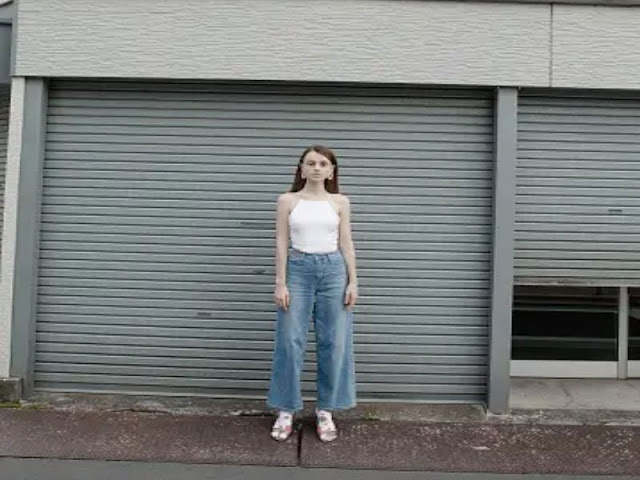Featured
- Get link
- X
- Other Apps
Tokyo Street Style

A Fusion of Culture and Creativity
Introduction
Tokyo, a bustling metropolis known for its cutting-edge
fashion scene, is a melting pot of diverse street styles that reflect the
city's vibrant subcultures. Influences from hip-hop, punk, skate culture, and
various other fashion movements come together to create a unique and eclectic
tapestry of Tokyo street style. In this article, we will delve into the diverse
street style in Tokyo, exploring its origins, key elements, and the cultural
influences that shape it.
Origins of Tokyo Street Style
Tokyo's street style culture took root in the post-war
years, particularly in the 1960s and 1970s, as young people began to express
their individuality through fashion. The city's street style movements evolved
alongside its burgeoning music and youth cultures. Influences from the West,
particularly American music and fashion, played a significant role in shaping
Tokyo's street style landscape.
Key Influences on Tokyo Street Style
- Hip-Hop
Culture: Hip-hop culture, with its bold and expressive fashion, has had a
profound impact on Tokyo's street style. Baggy pants, oversized hoodies,
and iconic sneakers are staples of Tokyo's hip-hop-inspired streetwear.
Brands like A Bathing Ape (BAPE) have become synonymous with this style.
- Punk
Aesthetics: Punk culture, which emerged in the 1970s, brought with it a
rebellious and anti-establishment fashion ethos. Tokyo's punk scene has
adopted elements like leather jackets, studded accessories, and unconventional
hairstyles.
- Skate
Culture: Skateboarding has not only influenced Tokyo's youth culture but
also its street style. Skate-inspired fashion often includes graphic tees,
loose-fitting pants, and skate shoes, reflecting the comfort and
functionality required for skateboarding.
- Harajuku
Fashion: The Harajuku district in Tokyo is renowned for its innovative and
eclectic street fashion. Harajuku style encompasses a wide range of
influences, from kawaii (cute) fashion to gothic and punk subcultures. Harajuku
street style is a place where creativity knows no bounds.
Key Elements of Tokyo Street Style
- Layering:
Layering is a fundamental aspect of Tokyo street style. Mixing and
matching various clothing items, from oversized jackets to longline tees
and scarves, creates depth and complexity in outfits.
- Eclectic
Patterns and Graphics: Bold patterns, graphic prints, and logos are
commonly found in Tokyo streetwear. These elements add vibrancy and visual
interest to the overall look.
- Hair
and Accessories: Tokyo street style often places a strong emphasis on
hairstyling and accessories. Unique hairstyles, colorful hair dyes, and an
abundance of accessories, from hats to chains, are common.
- Sneaker
Culture: Sneakers hold a special place in Tokyo's street style scene.
Collecting and wearing exclusive sneakers from brands like Nike, Adidas,
and Yeezy is a significant part of the culture.
- Vintage
and Thrifted Pieces: Vintage and thrifted clothing is highly regarded in
Tokyo street style. These pieces add a sense of nostalgia and
individuality to outfits.
Subcultures and Neighborhoods
Tokyo's diverse street style is also influenced by various
subcultures and neighborhoods within the city. Here are some notable ones:
- Harajuku:
As previously mentioned, Harajuku is a fashion mecca known for its
eccentric and creative street style. Takeshita Street in Harajuku is a hub
for emerging fashion trends and experimental styles.
- Shibuya:
The Shibuya district is synonymous with youth culture and nightlife. It's
a place where street style ranges from chic and trendy to rebellious and
edgy.
- Ura-Harajuku:
Located just behind Harajuku's bustling main street, Ura-Harajuku is a
neighborhood known for its underground and avant-garde fashion.
Independent boutiques and vintage shops are prevalent here.
- Koenji:
Koenji is a neighborhood celebrated for its vintage shops and thrift
stores. It attracts fashion enthusiasts looking for unique, retro pieces
to incorporate into their street style.
- Daikanyama:
Daikanyama offers a more sophisticated take on Tokyo street style. It's a
place where high-end boutiques and minimalist aesthetics thrive.
Global Influence and Recognition
Tokyo street style has garnered international recognition
and influence, shaping fashion trends and inspiring designers worldwide. Street
style photographers, fashion influencers, and media outlets have consistently
documented and celebrated the diverse fashion culture of Tokyo.
Global fashion brands have also tapped into Tokyo's street
style scene through collaborations and limited-edition releases. Japanese
designers, including Rei Kawakubo of Comme des Garçons and Hiroshi Fujiwara of
Fragment Design, have achieved global acclaim, further highlighting Tokyo's
role in shaping the fashion world.
Conclusion
- Get link
- X
- Other Apps
Popular Posts
The Top 5 Indisputable Men's Style Trends
- Get link
- X
- Other Apps
HOW TO PROGRAM AN AIR CONDITIONER: COMPLETE GUIDE
- Get link
- X
- Other Apps

